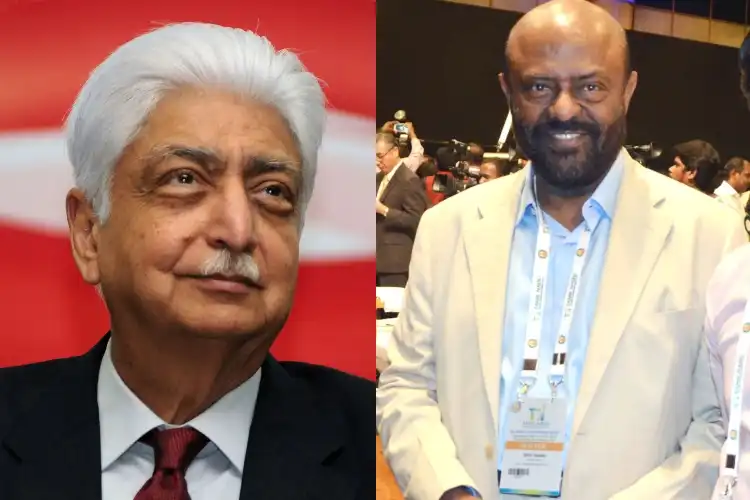
 Sushma Ramachandran
Sushma Ramachandran
With Amazon founder Jeff Bezos announcing his wish to give away most of his money to charity, it looks as if the philanthropy bug has spread far and wide among the super-billionaire community. Bezos is worth a cool 124 billion dollars, a mind-boggling amount that no one needs for his personal needs. It is thus all to the good that he has followed the path charted by others in his league like Bill and Melinda Gates along with Warren Buffet. It also sends a signal to many for whom wealthy innovators like him are role models that philanthropy must be practiced role after one has amassed enormous profits.
Bezos had not signed the Giving Pledge, an initiative by Bill and Melinda Gates for the super-rich to commit to giving away half of their wealth. But he has now clearly indicated that he is going on the same path. As for India, only a few of the top billionaires have so far signed the pledge. These include Azim Premji, Rohini and Nandan Nilekani, Kiran Mazumdar Shaw, PNC Menon, and Anil Aggarwal. This does not mean that philanthropy is not on the agenda of the top wealth creators but it does mean that they are not prepared to make a leap of faith by committing to giving away 50 percent of their riches.
At the same time, it must be conceded there has been a long tradition of philanthropy by top industrial houses in the country. In the western region, it was wealthy Parsis who turned giving into fine art and set up many worthy institutions including schools, colleges, and hospitals. Similarly, Marwari industrialists have set up chains of educational institutions in the northern and central regions that are well known for their excellence. The donations have extended to religious places and Birla temples have been sent up in many places.
The Muslim community too has not been far behind in donating to setting up hospitals and educational institutions both at the primary level as well as in higher education. Hospitals and engineering colleges have been set up by generous donations from this community in many parts of the country.
Having said that, it has to be accepted that charity is not a way of life in this country as in many others. It is precisely for this reason that the concept of mandatory corporate social responsibility (CSR) was made a legal responsibility in 2014. Companies must utilize two percent of their profits to spend on socially productive areas. Even so, the pace of private philanthropy has not been growing at the rate that it should for a country that requires huge investments in the social sector.
A study by Bain and Company -India Philanthropy Report 2022 - shows that overall private giving, both domestic and foreign, has stayed relatively flat over the past few years. Domestic private giving has, however, growing at a moderate pace of eight to ten percent.
It finds that CSR, family philanthropy (ultra–high-net-worth individuals) and retail giving cumulatively contribute about 84 percent of the total private philanthropic capital in India. CSR, driven by the two percent mandate, has grown at 15 percent annually in the past seven years, with its share in total private giving growing from approximately 12 percent in the fiscal year 2015 to 23 percent in FY 2021. The study expects that riding on rapid economic growth, formalization, and more companies coming under its umbrella, CSR contributions will grow at 19 percent annually, with its share expected to reach about 32 percent of total private giving by FY 2026.
Family philanthropy, in contrast, has contracted overall. UHNI giving has decreased from the peak of 2016, while HNI (high net worth individuals) giving has grown at a modest pace. Relative contributions (giving as a percentage of wealth) among Indian UHNIs range from 0.1 per cent to 0.15 percent compared with 1.2 to 2.5 percent in the United States, 0.5 to 1.8 per cent in the UK, and 0.5 to 1.4 percent in China. Overall, the study expects family philanthropy to grow at a robust 13 percent per year until FY 2026, driven by increasing wealth and a rise in the number of technology entrepreneurs and NowGen philanthropists.
As far as the new-age industrialists are concerned, there is a great deal of consciousness about the need to give to those who are at the bottom of the pyramid. Azim Premji’s foundation has partnered with the Karnataka government to ensure that education infrastructure is improved significantly. The Shiv Nadar-led HCL is well known for its Vidya Gyan chain of schools in UP for underprivileged children. Similarly, Infosys founder Nandan Nilekani and his wife Rohini have done sterling work in the area of the environment.
At the same time, there is certainly a need to ensure that a culture of giving to the most deserving sections is inculcated in Indian society. One disturbing element is the traditional mode of donating to religious institutions. This has led to the accumulation of wealth by religious trusts in lakhs of crores. The Tirupati temple trust or the Shirdi Sai Baba Sansthan Trust has enormous funds accumulated with them.
It is true that many of these have used the moneys for setting up educational institutions and hospitals. But the fact is, that such funding needs to be targeted to those agencies that can provide the greatest benefit to the needy rather than to religious trusts. They may use the funds effectively in many cases but it is certainly more efficient to funnel these directly to NGOs or agencies that are providing succor to the poor.
ALSO READ: Volatile oil markets pose a challenge to India’s growth
Bezos’ declaration of giving away his billions thus comes as a timely reminder that both corporates and individuals need to target their charity more effectively. In this country, the overall volume of donations also needs to be stepped up considerably especially since the pandemic has resulted in the poor becoming poorer and the rich becoming richer. This is not just charity but a bid to ensure that entrenched inequality is removed from the system as soon as possible.
